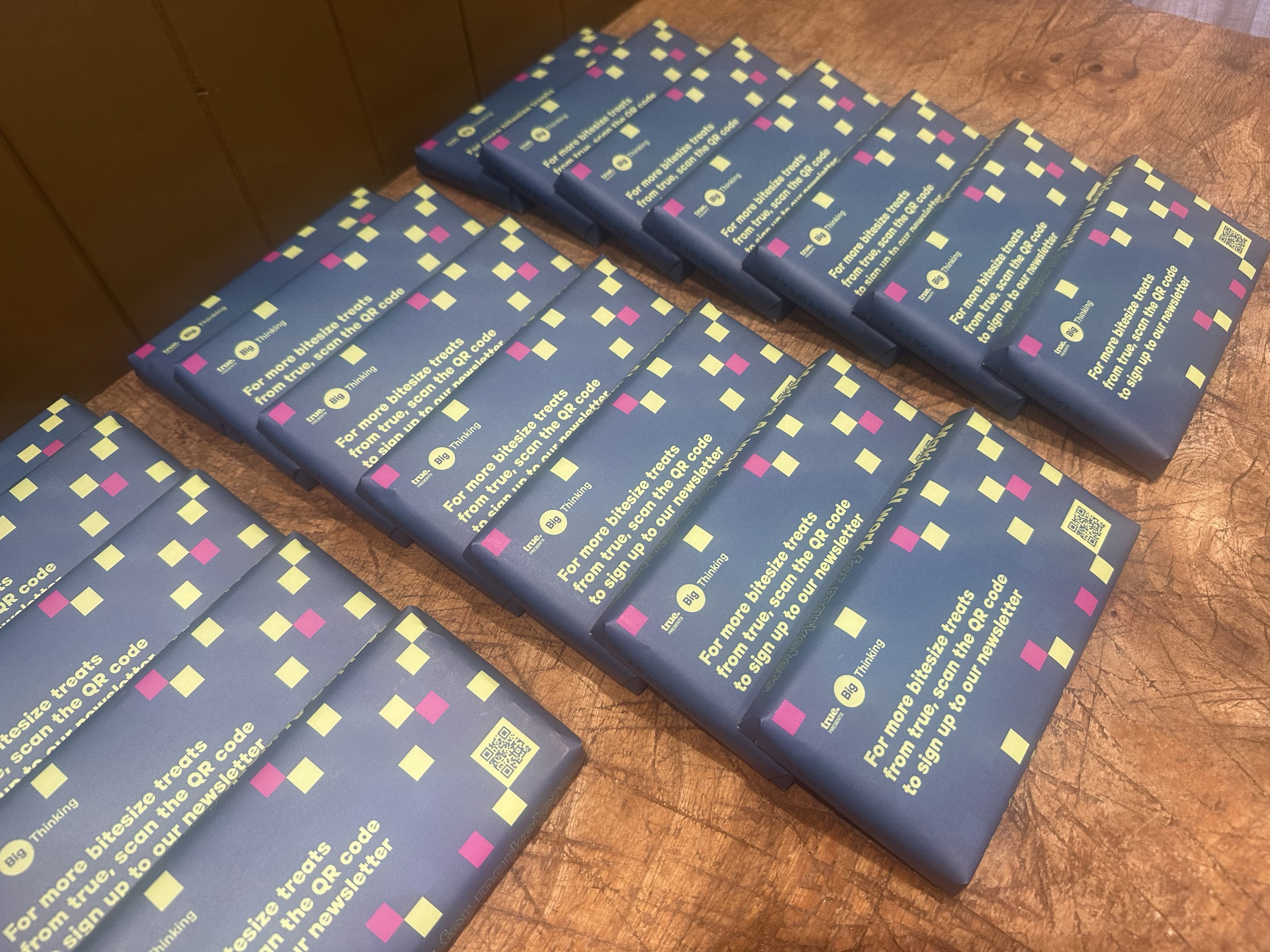Big Thinking event on AI
true presented a dynamic afternoon session of IRL talks and networking to help marketers integrate AI technologies into the way they work.
Making AI work for Marketers landed in Bristol
Last week, true hosted a range of clients at The Forge in central Bristol. The goal was to demonstrate practical and accessible applications of AI for addressing real-world challenges. By sharing insights and case studies, we wanted to help our clients deliver better customer experiences and bolder brand communications.
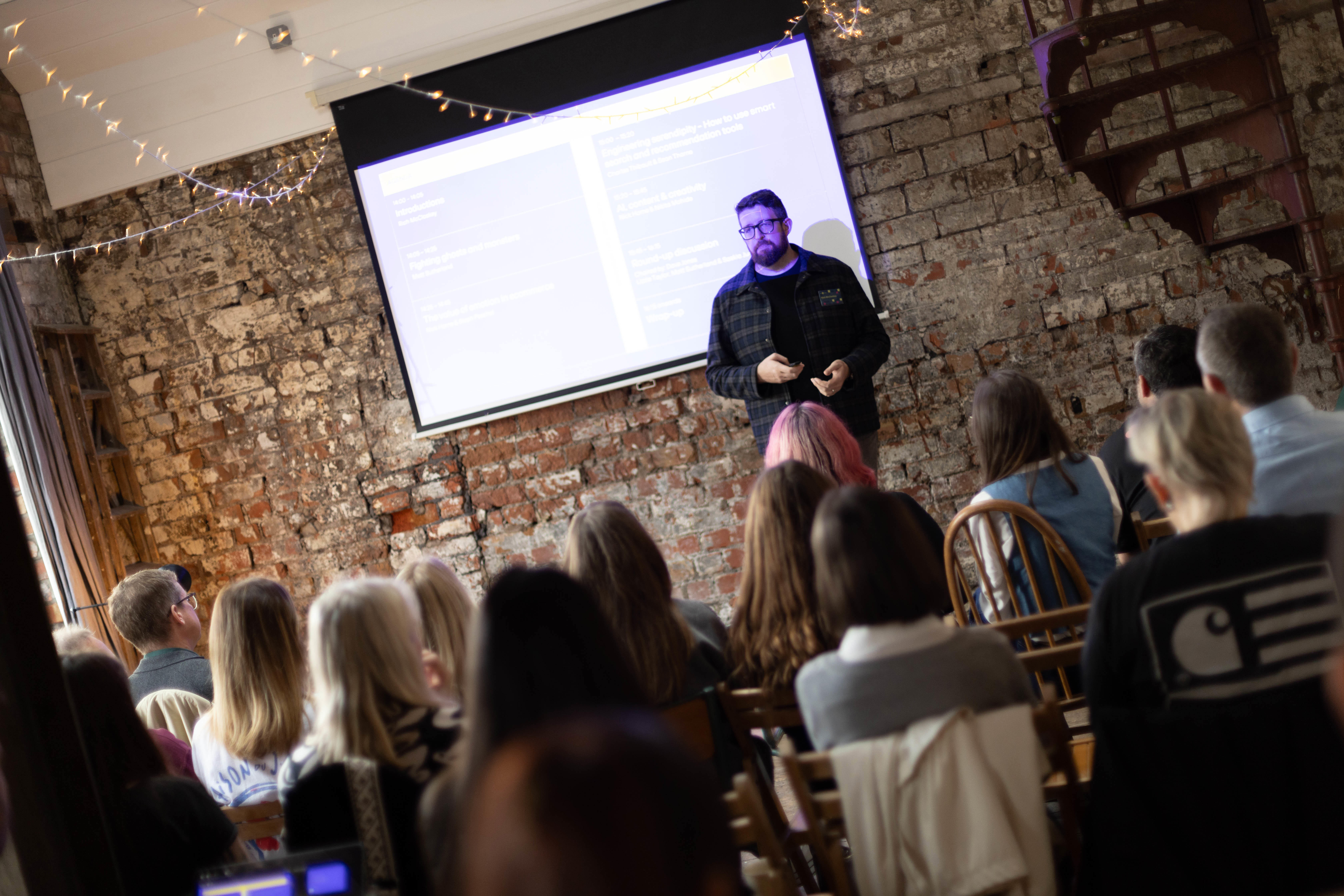
AI is already woven into our daily lives. Banking apps, digital assistants, and search engines have seamlessly integrated these technologies, often without consumers even being aware of it. So, what does this mean for marketers? We aimed to create an open forum to discuss AI technologies, demonstrate how some of our clients are incorporating these tools into their platforms, and provide tangible guidance for effectively implementing AI in marketing communications.

Fighting AI ghosts and hallucinations
First up, Head of Technology, Matt Sutherland took the floor to introduce the different types of AI and where they are in their hype cycle. In the area of Generative AI, we’ve seen numerous published success stories alongside notable failures (like the infamous Microsoft Tay tweet), positioning Generative AI at the "Peak of Inflated Expectations." This technology spans a variety of applications that brands and agencies are already utilising— from image generation, AI recommendations, to video and chat generation, like ChatGPT.
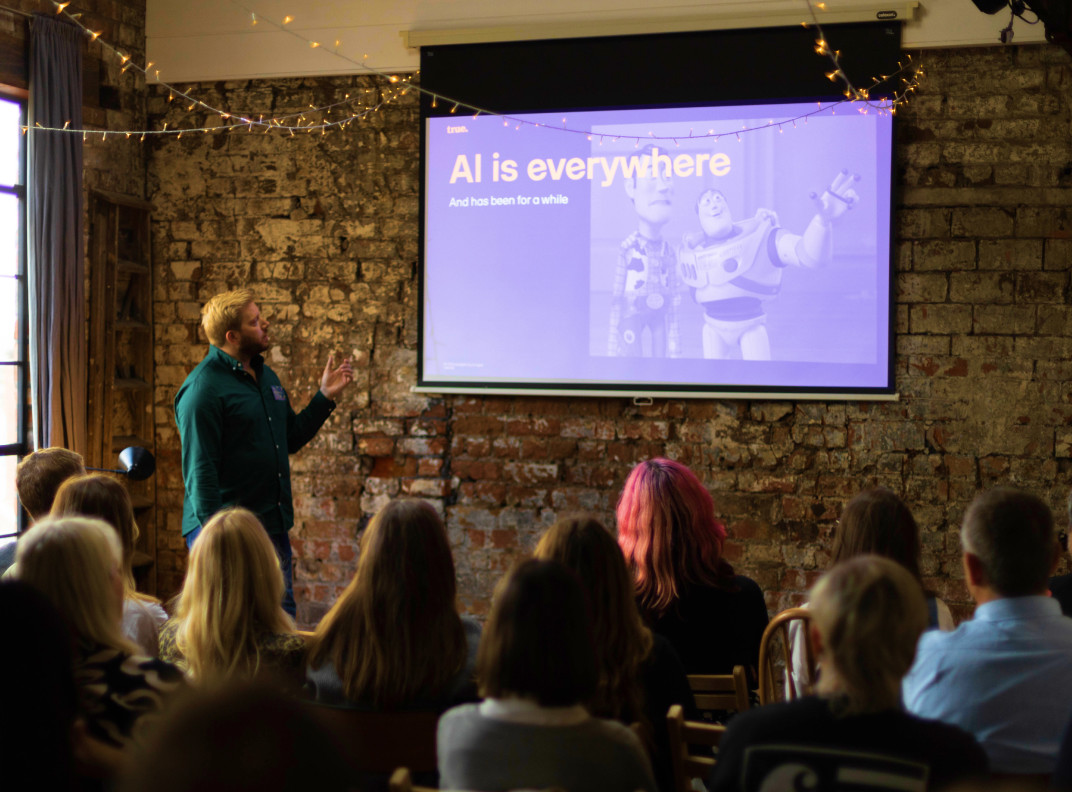
Matt talked about the data models (LLMs) these platforms rely on to create their content. However, like any machine, the output is only as valuable as the information fed into it. If the data contains inaccuracies or biases, unsettling "hallucinations" begin to emerge.

Matt discussed the reputational risks that could happen to a business and provided a checklist to ensure risks in AI implementation are mitigated. Want to have the checklist sent to your inbox? Drop Matt a quick line Matt.Sutherland@truedigital.co.uk
Insights from The Value of Emotion in Ecommerce whitepaper.
Next up on the agenda, Creative Director, Nick Horne, and UX Lead, Steph Peschel, shared insights from our Marketing Week whitepaper – The Value of Emotion in Ecommerce.
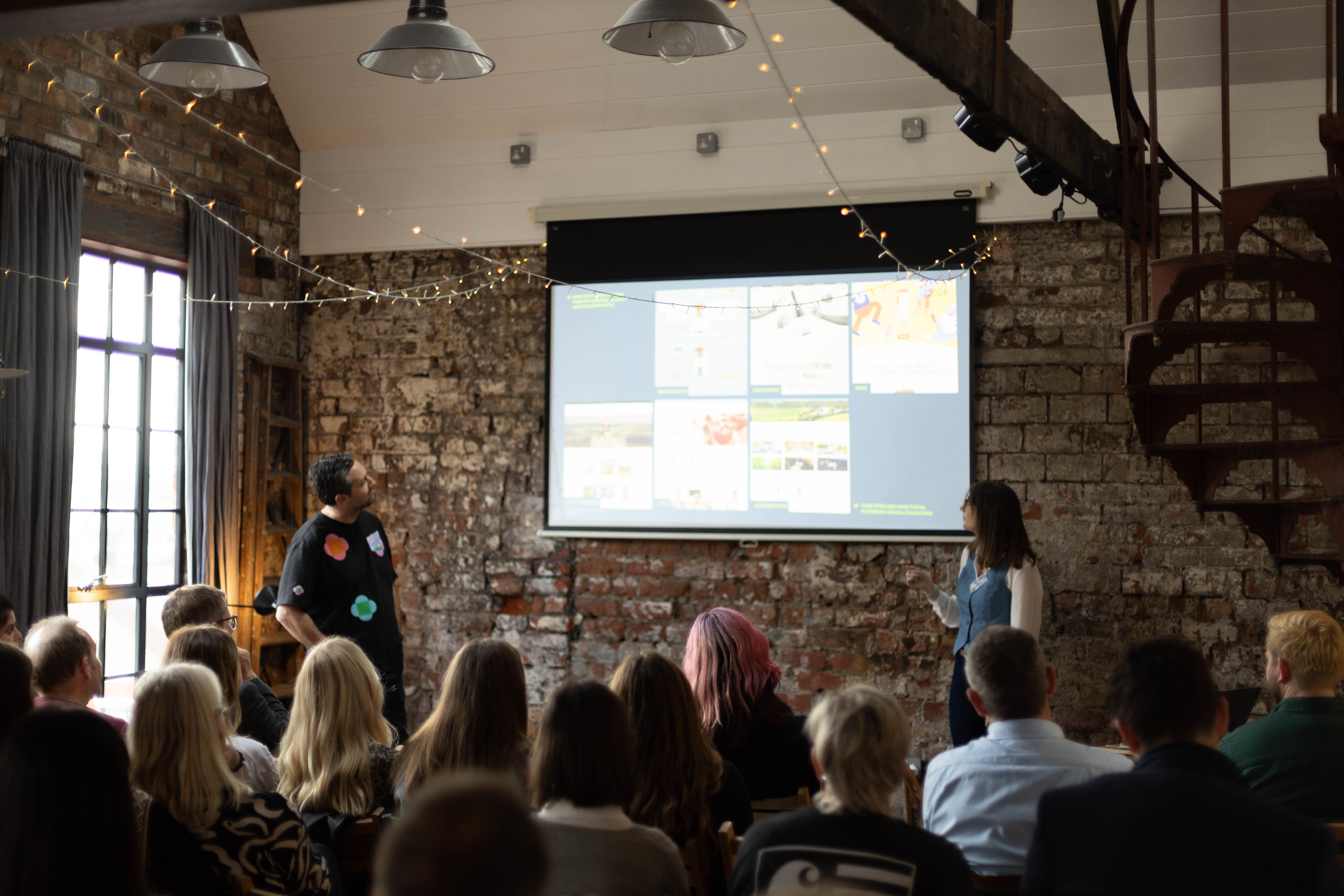
The paper delves into some of myths and preconceptions surrounding design, and explores the purest form of user-testing - tracking emotional responses to design through the application of the AI tool, Odaptos. Download a copy here.
Their discussion invited the audience to take stock of the homogenised landscape of ‘white box’ ecommerce websites, by highlighting the ways in which ecommerce best practices have become entrenched and fixated on usability and speedy journeys, often at the expense of meaningful brand moments.
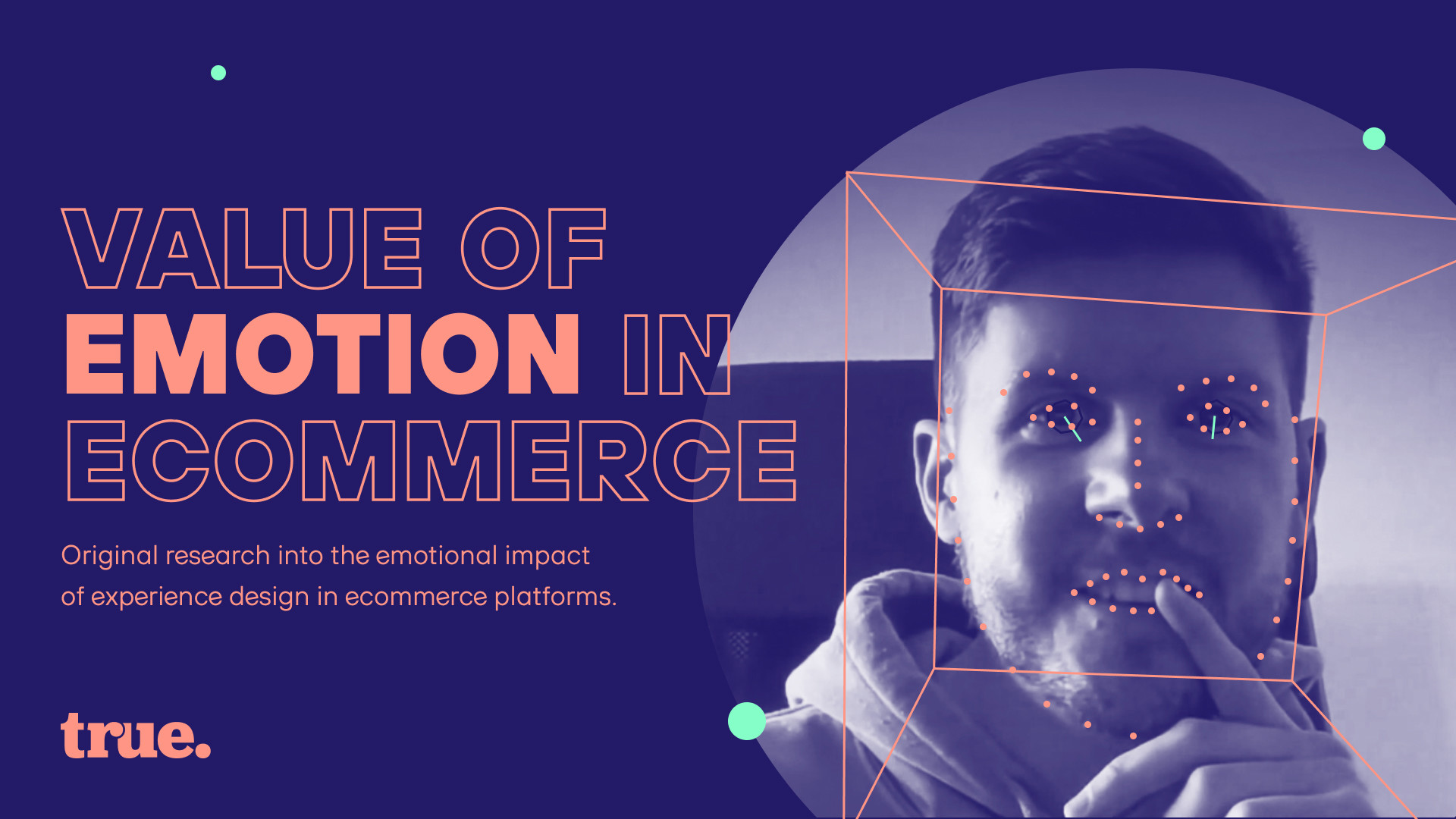
However, usability only focuses on one part of user experience, and as part of the whitepaper discovery, Nick and Steph explained that opportunities were being missed by not opening up to the full spectrum of user needs and desires.
Steph illustrated the importance of emotions in design, highlighting from the research, that websites employing more emotive techniques are, on average, 39% more memorable. From a brand's perspective, this increased memorability is precisely the outcome you’d want to achieve. She also shared some compelling examples of emotive design – from interaction design, general animation, video, story telling, gamification, playful product descriptions and photography choices. Check out the below video of brilliant brands that are using these techniques.
Engineering serendipity - Smart search and recommendation tools
Charles Thibault, Snr Account Director, and Sean Thorne, Snr Developer, introduced the world of recommendation engines. Find out more about the topic in Sean’s article for The Drum here. Sean explained how most of us are already influenced by these engines—through channels like social media, job boards like LinkedIn, and ecommerce platforms like Amazon.

Charles steered the conversation towards a recent case study involving true's client, St Austell, who have successfully integrated the Algolia recommendation tool as part of their broader digital transformation efforts—a project which has been recently won at both The Drum and Digital Impact Awards. Read the case study here.
The impact of Algolia on the wholesale business has been extremely positive, driving 60% of sales through search and recommendations. Customers can now find products more quickly alongside being presented with a wider range of options.
If you'd like to find out how recommendation tools can help your business, drop Charles a line Charles.Thibault@truedigital.co.uk
SEO in the age of AI
The line-up continued with our Senior SEO Manager, Nikita, guiding the audience through a brief history of AI in search, explaining how algorithms have operated behind the scenes and their integral role in search results, particularly with the introduction of AI Overviews.
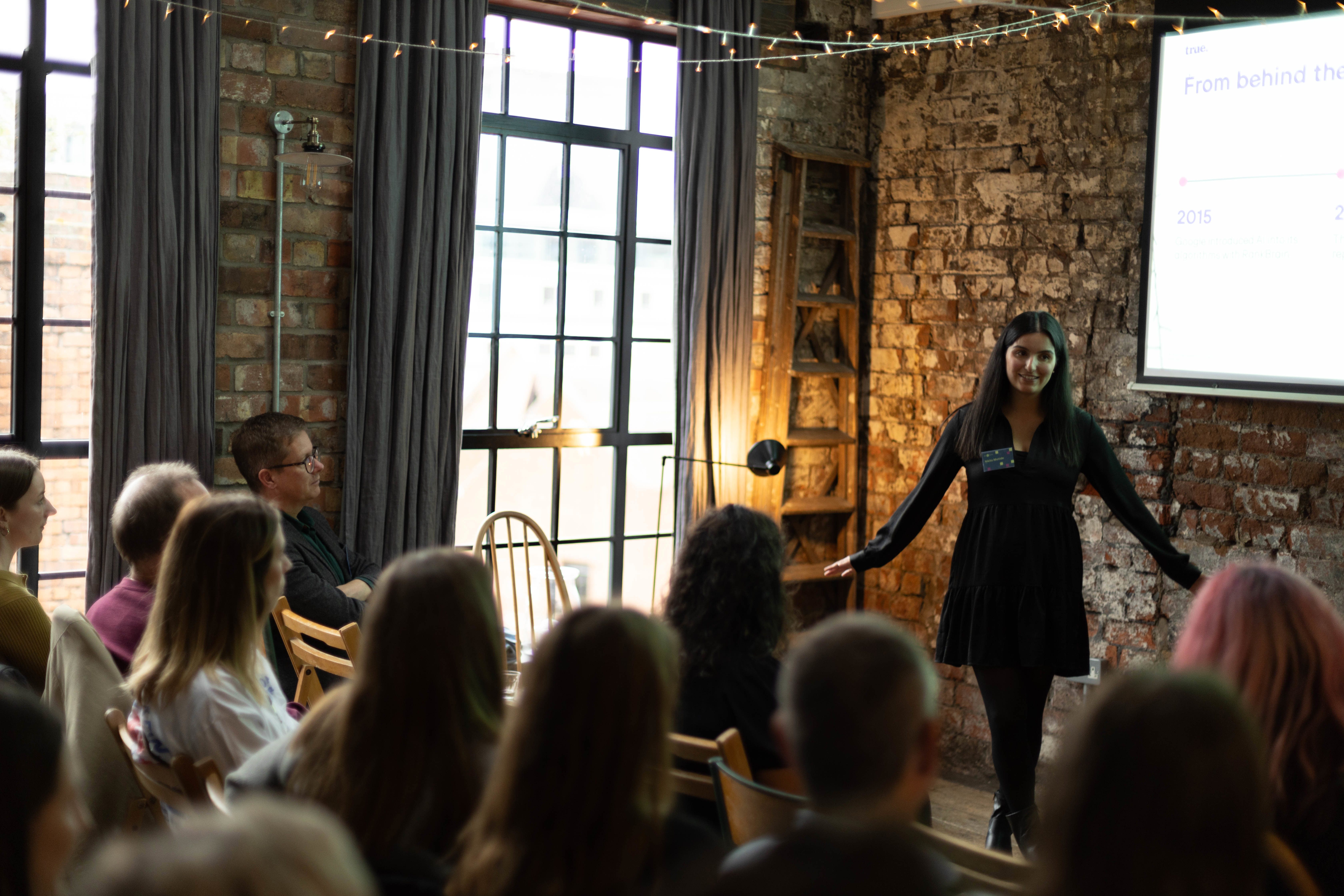
She clarified the purpose of AI Overviews - to improve the search experience by giving users quick answers, but akin to Matt’s earlier talk, Nikita also presented examples that were far from perfect.

Google has recently changed its stance on AI generated content, which Nikita will be sharing a follow up blog on shortly, but the behemoth’s focus remains people-first content. In summary, don’t use AI to create low quality content – demonstrate EEAT (Experience, Expertise, Authority and Trust) or your site will be penalised.
AI generated content – Limitations in a limitless world
Our final leg of the tour was led by true’s Creative Director, Nick Horne. Through his creative lens, Nick showcased some of the more whacky and bizarre examples of AI-generated content. When the language model has access to a wealth of data, the results can be impressive. For a more unusual search term request, like the below example - ' A man with meat strapped to him', the outcomes are confusing, to say the least.

Nick presented examples of how we’re utilising AI-generated media with clients. At first glance, these pieces appear quite polished, but a closer look revealed some oddities. He emphasised the crucial need for governance over content to prevent any potential brand reputational mishaps in the future.
‘AI is only part of the process’ was the thread that many of the talks pulled on throughout the day, but came to life through Nick’s example – Finding Faith. This film was created as a way of “demonstrating the craft it takes to control AI to meet our creative standards, instead of letting AI control how much we lowered them”. The production film highlights the intricacies and complexities of creating an AI film of this standard –showcasing the diverse range of asset generation techniques utilised (live-action footage, 2D and 3D animation, editing) to create an extraordinary piece of content.
Watch the behind the scenes of how the film was made here.
The session ended on an amusing, but rather peculiar high, as Nick delved into the world of weirdcore – a creepy TickTok sensational trend that aims to trigger feelings of “confusion, disorientation, nostalgia”. The phenomena hightlights a generation of creators who are eager to push boundaries by intentionally crafting things that are purposefully fake, without trying to pass them off as real, whilst having fun along the way.
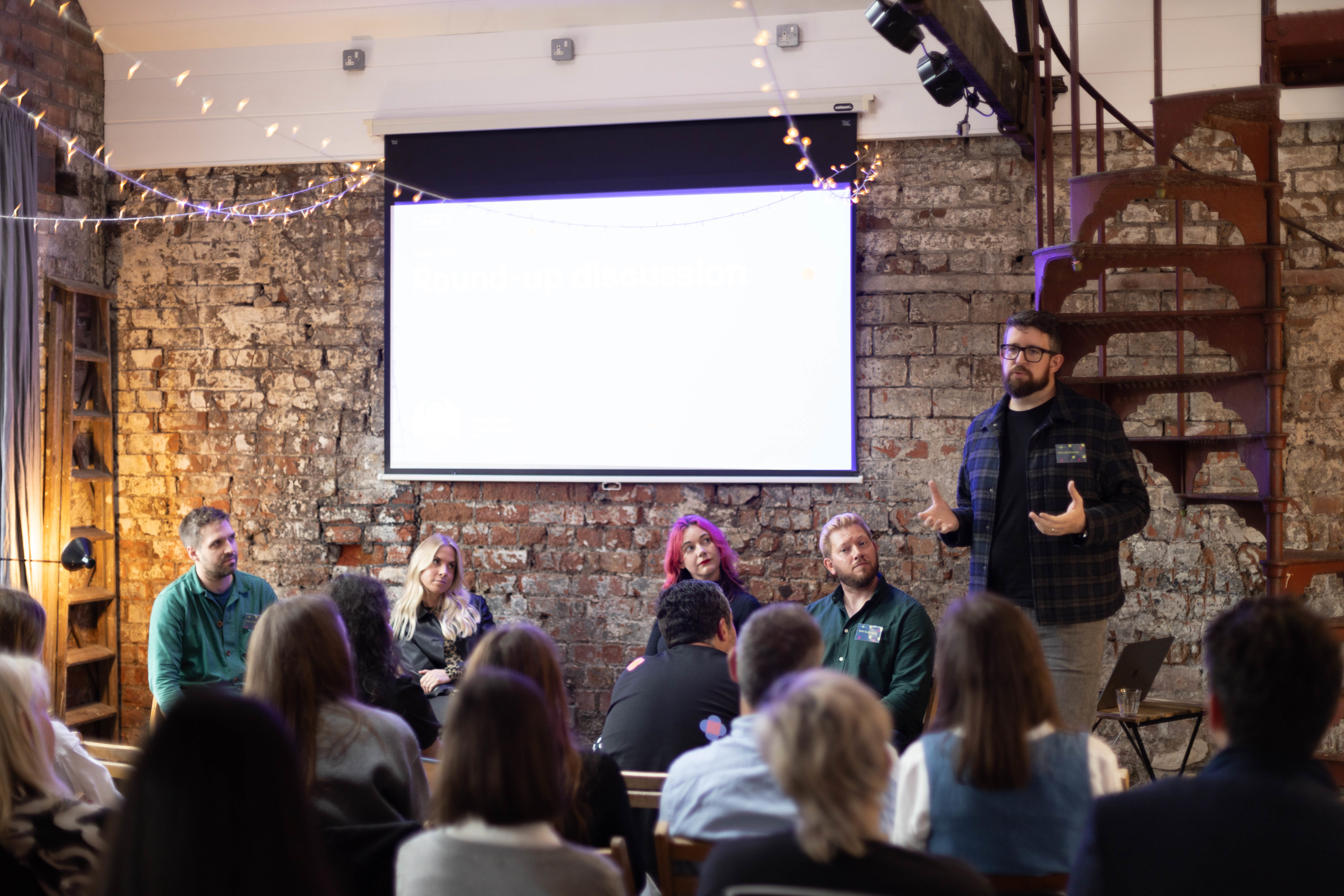
Our event concluded with an open discussion with Cribbs’ Marketing Director, Lizzie Taylor, on how agencies and clients can collaborate to embrace AI. Lizzie candidly shared her initial skepticism about the topic and the industry rhetoric that “AI would steal all our jobs.” Talking about her experience of working on a recent campaign that incorporated AI, she explained that despite the perception that the process might be quicker, the reality was quite different. Creating brand assets through Gen AI can be an innovative and cost-effective way to produce high-quality visuals that might otherwise be out of reach within a traditional budget. Lizzie flagged though that to develop assets that authentically reflect brand values and are credible requires significant human oversight; a process that can be both time-consuming and demand a high level of commitment.
Lizzie emphasised the importance of trust in the agency-client relationship and the need for businesses to educate themselves to fully understand what they’re getting into.
We’ll be sharing more insights from this conversation in a future blog, so stay tuned! If you want to find out more about future events, drop us a line at info@truedigital.co.uk
